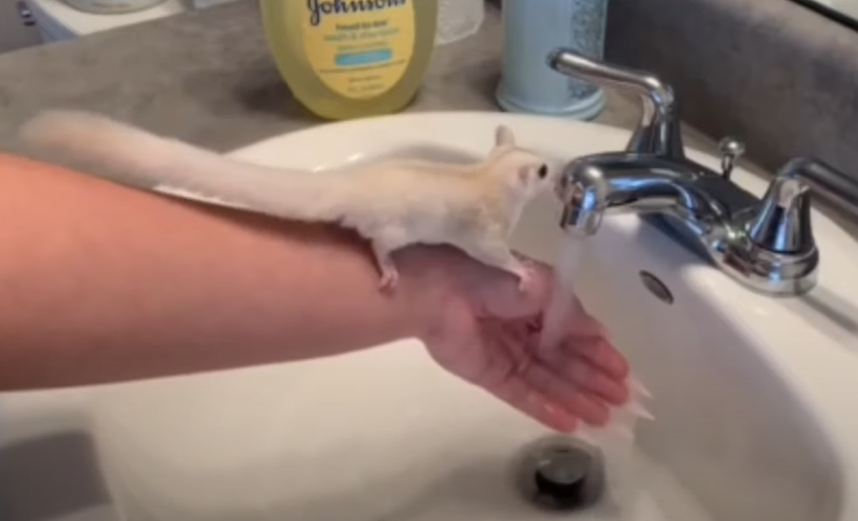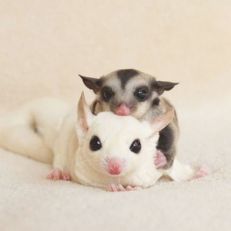
How to Bathe a Sugar Glider? A Step-by-Step Guide
How to Bathe a Sugar Glider may not be something you think about often, but every sugar glider owner should know how to handle those rare messy moments. Bathing a sugar glider can be a gentle and even bonding experience if done correctly. Let’s dive into the steps and tips to make sure it’s safe, stress-free, and enjoyable for both of you.
Can you bathe a sugar glider?
The short answer is NO, you shouldn’t bathe a sugar glider unless it’s absolutely necessary. As someone who’s cared for sugar gliders for over five years, I’ve learned that these adorable little creatures are meticulous groomers. They take care of themselves naturally, much like cats, and regular baths can do more harm than good.
Why Bathing Is Unnecessary
Sugar gliders are naturally clean animals. They groom themselves often, keeping their fur soft, clean, and odor-free. If you maintain a clean habitat, they won’t need any extra help from you in the hygiene department.
The Risks of Bathing Sugar Gliders
– It Causes Unnecessary Stress: Sugar gliders are not used to being immersed in water. Bathing them can be a terrifying experience, causing unnecessary stress that could weaken their immune system or lead to other health issues.
– It Strips Away Natural Oils: Their fur is coated with natural oils that help keep it clean and healthy. Bathing removes these oils, disrupting their natural grooming process. Without them, sugar gliders are more vulnerable to skin problems and temperature regulation issues.
– Serious Health Risks: Sugar gliders are susceptible to hypothermia, pneumonia, or respiratory infections if they get wet and aren’t dried properly. Even brief exposure to cold water or air can be dangerous.
What To Do Instead
If your sugar glider gets dirty (which is rare), use a damp cloth (NO need to use soap or shampoo!) to gently wipe the affected area. Make sure they’re kept warm during the process. Most of the time, though, simply ensuring their cage is clean will keep them fresh and happy.
How to bathe a Sugar Glider?
Here’s a simple, step-by-step guide to bathing your sugar glider safely and comfortably. Remember you aren’t supposed to bathe Sugar Gliders unless there is a medical issue/need!
Step 1: Prepare the Bathing Area
Choose a small, clean sink or basin. Make sure the water is lukewarm, not too hot or too cold, and shallow enough that your sugar glider can stand comfortably without being submerged. This will help them feel safe and less nervous.
Step 2: Gather Supplies
Before starting, have everything ready. You’ll need a gentle pet shampoo (made for small animals), a soft sponge or washcloth, and a soft towel for drying. Avoid using shampoos with harsh chemicals or strong fragrances.
Step 3: Introduce the Sugar Glider to Water
Sugar gliders can be nervous around water, so take it slow. Hold your sugar glider gently and lower them into the water, ensuring their feet touch the bottom. Keep their head above water to avoid scaring them. Always be calm and reassuring to help them stay relaxed.
Step 4: Wet and Shampoo Gently
Using a soft washcloth or sponge, wet their fur gently while avoiding their face and ears. Sugar gliders instinctively keep their heads above water, so be mindful not to immerse their head. Apply a small amount of shampoo to your hands or the cloth and lather gently in circular motions, focusing on any dirty spots.
Step 5: Rinse Thoroughly
Once their fur is cleaned, use lukewarm water to rinse off the soap completely. You can use a handheld sprayer or cup to gently pour water over their body. Make sure no soap is left behind, as this can irritate their skin.
Step 6: Dry Your Sugar Glider
After the bath, lift your sugar glider out of the water and wrap them in a soft, absorbent towel. Gently pat them dry, avoiding any harsh rubbing. You can use a hairdryer on the lowest heat setting, keeping it at a safe distance, to ensure their fur is thoroughly dry.
Step 7: Post-Bath Comfort
Once they’re dry, place your sugar glider in a warm, cozy environment, such as a soft pouch or their nesting area. Monitor them to ensure they are warm and comfortable, and give them time to relax.
Common Mistakes to Avoid
Bathing your sugar glider can be a bonding experience, but it’s easy to make a few mistakes that could leave both you and your pet feeling stressed. Let’s explore some of the most common slip-ups and how to avoid them for a safe, enjoyable bath time!
Using Water That’s Too Hot or Cold
Sugar gliders are tiny and sensitive, so water temperature matters! Too hot, and they could get burned; too cold, and they might become stressed. Stick to lukewarm water that feels comfortably warm on your skin—if it’s comfy for you, it’s perfect for them.
Getting Their Head Wet
Sugar gliders are great at keeping their heads out of water for a reason—they need to stay dry up top! Avoid submerging their head or face, as water in their ears or nose can cause panic or even health issues. Always focus on washing the body only.
Using the Wrong Shampoo
Human shampoo? No way! Sugar gliders have delicate skin, and harsh chemicals or fragrances can irritate them. Always choose a gentle, pet-safe shampoo designed for small animals. Trust us, their soft fur will thank you!
Rushing Through the Bath
Bathing should be calm and relaxed, not rushed. Sugar gliders can get nervous if things move too quickly, so take your time. Speak softly, move gently, and let them feel secure. A slow, steady approach makes bath time much smoother.
Not Rinsing Well Enough
Soap left on your sugar glider’s fur can cause skin irritation or discomfort. Make sure to rinse thoroughly with lukewarm water to remove all traces of shampoo. Just be gentle—no need to soak them!
Being Too Rough While Drying
After the bath, gently pat your sugar glider dry with a soft towel—no rubbing! Their fur is delicate, and rough handling can cause tangles or skin irritation. If using a hairdryer, keep it on the lowest heat setting and maintain a safe distance to avoid overheating.
Skipping Post-Bath Snuggles
Once they’re dry, make sure your sugar glider stays warm and cozy. Place them in a soft pouch or warm nesting spot to help them regulate their body temperature. This is also a great time for some extra cuddles to reassure them!
Now you know how to bathe a sugar glider the right way. While it’s not something you’ll need to do often, knowing how to handle bath time can make a big difference when the need arises. Remember, the key is patience, gentle handling, and creating a calm environment. By following these steps, you’ll ensure your sugar glider stays clean, healthy, and happy—and strengthen the bond you share along the way.




